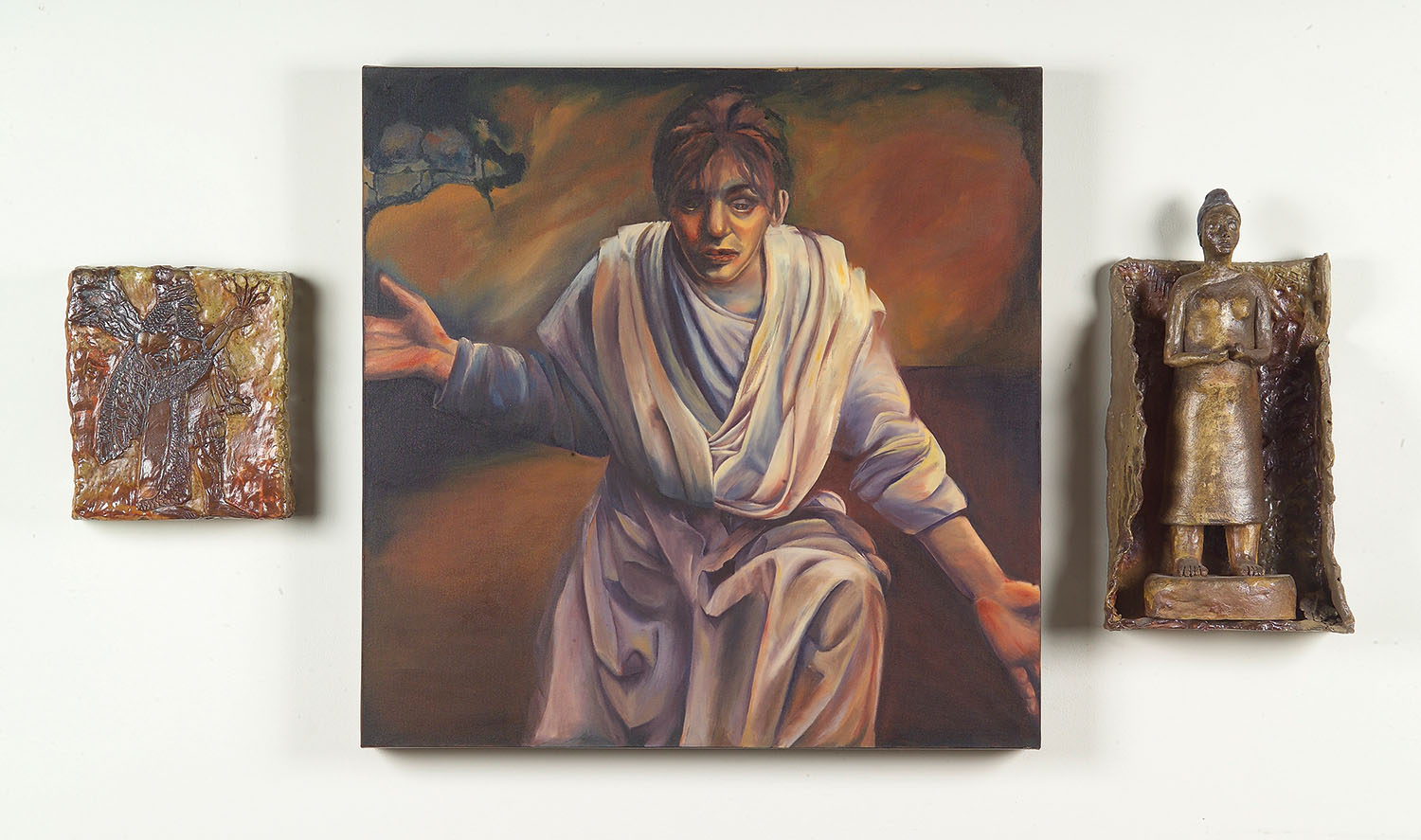![Almost three decades after the Gulf War, “[I'm] still here,” says painter Sahar Fakhoury, whose work shows the remarkable trajectory of a life transplanted. Photo by Matt Rose](https://carolinahg.com/wp-content/uploads/2016/12/Fakhoury-Portrait-RZ-2.jpg)
Asheville artist Sahar Fakhoury, a Palestinian born and raised in Kuwait, left Kuwait City with her husband and three daughters in June 1990 to tour America. Two months later, Iraq invaded Kuwait and the Gulf War began, destroying any chance of return.
“We had planned our trip ahead of time, not knowing that any kind of disturbance might occur and change our lives forever,” recalls Fakhoury. The couple and their children ended up staying with relatives in Mars Hill. “After the war ended, we were not able to go back because of political issues beyond our control, so 26 years later we’re still in Asheville.” (She didn’t visit her family back in Kuwait until 2003.)
Understandably, Fakhoury’s body of artwork covers vast territory — from the emotionally charged, war-ravaged canvases of earlier years to the more serene landscapes and figurative work of later times.

In Kuwait City, she had studied computer science, but opportunities for a formal art education were few. Her unplanned exile in the U.S. led to an art degree from UNC Asheville. “Although we had art in schools from grade one through grade twelve, Kuwait didn’t have a college art program when I was growing up,” she explains. But she did get a chance to mentor with Tamam Al Akhal Shammout, a Palestinian artist and the wife of one of the Arab world’s most famous painters of the Palestinian diaspora, Ismail Shammout (1931-2006). When Tamam opened her studio for classes, Fakhoury signed up. “I continued to study drawing and painting with her for three years,” she recalls, “and meanwhile I met other artists who also offered classes, so I doubled up with them.”
Once in America, and with her art degree completed, Fakhoury’s pieces reflected the anger and dislocation of war that had erased her former life. “For many years, my art was an expression of my frustrations and emotions,” she says. “I was able to dig deep inside myself, to release the feelings of confusion and loss of identity.” Flames, smoke, and fleeing figures occupy these earlier canvases. A young girl cowers in a window, an arm flung over her eyes to block out the horror only she can see. “By depicting figures in my artwork, I was trying to remind people that war is not only what they see on TV: collapsed empty buildings and bombed streets — that innocent people lived there as well.”

These visions of chaos and destruction comprise her most powerful and cathartic images, but eventually her attraction for the human form began to assert itself in less politically referenced ways. “By observing the body … I developed a special interest in the figure in motion,” she says. “It was a way to challenge myself and take my work a step further.”
Working from the many photos she takes on the street or during family vacations, Fakhoury abstracts the figures from their natural background to explore, through sketching, a variety of more imaginative settings. “Then,” she says, “I put it on canvas … these paintings are time-consuming and very challenging, but I enjoy the challenge and the outcome.” Some of the figures are adapted and inserted into Middle Eastern settings — against the iconic arches and stonework of Palestine, for example, or shown in simultaneous action to recall the repetitive nature of Arabic decorative forms.
Fakhoury works not only in oil, but also in watercolor, mixed media, collage, and sculptural clay. She’s undertaken commissioned work, too, notably a current series of still-life paintings depicting toys as a metaphor of childhood, and has recently begun attending weddings or other social gatherings and painting them on the spot. (“Talk about figures in motion!” she notes.) Whatever the medium, though, her fluid line, careful modeling, and subtle palette remain evident.
While her current work evokes a sense of serenity, there remains a wash of memory and tender absence, the remnants of the conflagration that brought with it the blessing of artistic recognition. “Now, I go back to the Middle East often to visit friends and family,” says Fakhoury. “Art, in my opinion, is a form of meditation.”
For more information about Sahar Fakhoury’s work, visit sahar-art.com. The artist teaches painting at her studio in the River Arts District (Trackside Studio, 375 Depot St., 828-242-4708); also look for a spring exhibit at Asheville Gallery of Art (ashevillegallery-of-art.com).
